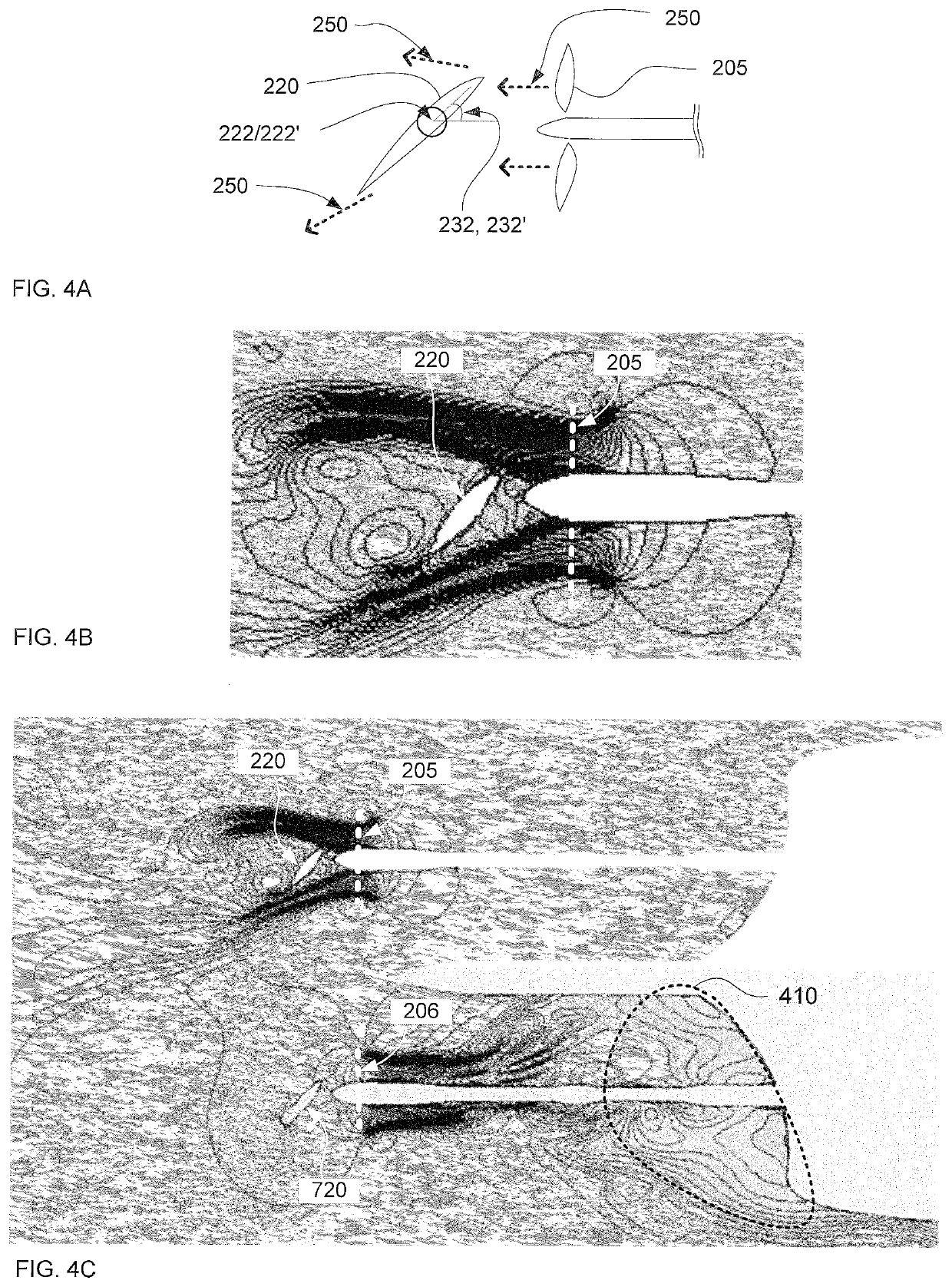Navigation system with independent control of lateral and longitudinal thrust
a navigation system and longitudinal thrust technology, applied in the field of marine navigation, can solve the problems of poor maneuverability, increased fuel consumption, and reduced maneuverability, and achieve the effects of reducing environmental impact, increasing safety, and high fuel efficiency
- Summary
- Abstract
- Description
- Claims
- Application Information
AI Technical Summary
Benefits of technology
Problems solved by technology
Method used
Image
Examples
Embodiment Construction
[0043]A propulsion system for a ship may comprise first and second thrust apparatus, each configured to generate forward or reverse thrust. The thrust apparatus may be operated independently, such that they generate different thrusts. For example, a first thrust apparatus may generate a forward thrust while a second thrust apparatus may generate a rearward thrust.
[0044]Water (e.g., thrust generated by the thrust apparatus) may be directed laterally by a director, such as a rudder or a nozzle. A first director may direct thrust from the first apparatus, and a second director may direct thrust from the second apparatus. The directors may be operated independently. For example, a leading edge of one director may be oriented toward starboard while the leading edge of another director is oriented toward port.
[0045]Thrusts from the thrusters and the angles of lateral direction from the directors may be adjusted independently to achieve a desired combination of lateral thrust, independent ...
PUM
 Login to View More
Login to View More Abstract
Description
Claims
Application Information
 Login to View More
Login to View More - R&D
- Intellectual Property
- Life Sciences
- Materials
- Tech Scout
- Unparalleled Data Quality
- Higher Quality Content
- 60% Fewer Hallucinations
Browse by: Latest US Patents, China's latest patents, Technical Efficacy Thesaurus, Application Domain, Technology Topic, Popular Technical Reports.
© 2025 PatSnap. All rights reserved.Legal|Privacy policy|Modern Slavery Act Transparency Statement|Sitemap|About US| Contact US: help@patsnap.com



